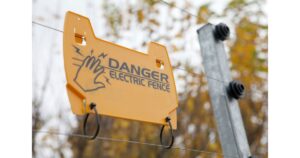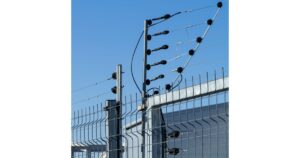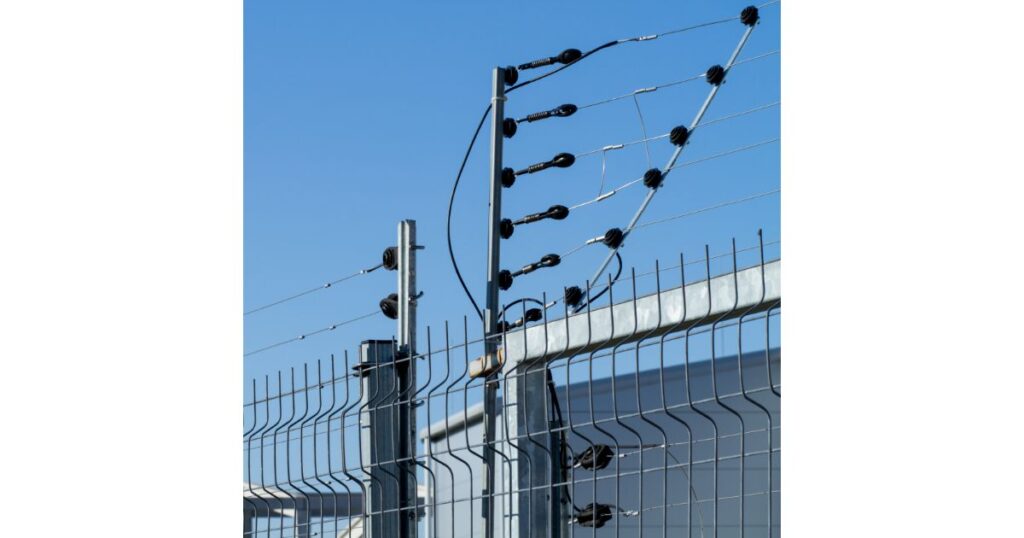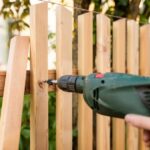How to electrify a fence for dogs Electrifying a fence may seem like a daunting task, but with the right equipment and knowledge, it can be done effectively and safely. As electric fences have gained popularity over the years due to their effective protection mechanisms, more and more dog owners face this dilemma.
We present a detailed guide on how to electrify a fence to keep your dogs safe and secure. Electrifying a fence for dogs can be an effective way to prevent them from escaping while ensuring their safety. Our step-by-step guide will help you create a secure boundary for your pets while minimizing any potential harm.

Understanding Electric Fencing
Table of Contents
ToggleBefore you start electrifying your fence, it’s crucial to understand how electric fencing works. Electric fences are designed to deliver a mild electric shock to deter animals from crossing the boundary. The shock is uncomfortable but not harmful, making it a safe and humane way to contain your dogs.
Choosing the Right Equipment
Electric Fence Controller
The heart of your electrified fence system is the electric fence controller. This device sends electrical pulses through the fence wire. When choosing a controller, opt for a high-quality, weather-resistant model to ensure durability. It’s essential to select a controller that matches the size of your fence and the number of dogs you have.
Fence Wire
Selecting the right fence wire is crucial for the effectiveness of your electrified fence. High-tensile steel wire is a popular choice due to its strength and durability. Make sure the wire is corrosion-resistant to withstand various weather conditions.
Insulators
Insulators are used to attach the fence wire to posts and prevent electrical leakage. Insulators come in various materials, including plastic and porcelain. Choose insulators that are suitable for your specific fence design and easy to install.
Planning Your Electric Fence
Fence Layout
Before installation, plan your fence layout carefully. Identify the boundaries you want to secure and consider any obstacles, such as trees or existing structures. Ensure that the fence will enclose enough space for your dogs to roam comfortably.
Grounding System
A proper grounding system is essential for the effectiveness of your electric fence. It provides a path for the electric pulse to complete its circuit. Follow the manufacturer’s instructions to install ground rods at specific intervals and connect them to the controller.
How To Electrify A Fence For Dogs. Installing the Electric Fence
Now that you’ve gathered the necessary equipment and planned your fence layout, it’s time to start the installation process.
- Installing Fence Posts: Place fence posts at regular intervals along your planned fence line. Make sure they are securely anchored in the ground to support the tension of the wire.
- Attaching the Wire: Begin by attaching the fence wire to one end of the fence line. Use insulators to secure the wire to the posts as you go along. Be sure to keep the wire taut for maximum effectiveness.
- Installing the Controller: Mount the electric fence controller in a weatherproof location near a power source. Connect the controller to the fence wire following the manufacturer’s instructions.
- Grounding: Install the grounding system as previously planned, ensuring a proper connection to the controller.
- Testing: Before allowing your dogs near the electrified fence, conduct a thorough test to ensure it’s functioning correctly. Most controllers have a tester to help you verify the electric pulse.
Maintaining Your Electric Fence
To keep your electrified fence in optimal condition and ensure the safety of your dogs, regular maintenance is crucial.
- Inspect Regularly: Check the fence wire, insulators, and controller regularly for signs of damage or wear. Replace any damaged components promptly.
- Vegetation Control: Keep vegetation around the fence line trimmed to prevent interference with the wire. Overgrown plants can reduce the fence’s effectiveness.
- Battery Check: If your controller operates on a battery, monitor its status and replace it as needed. A weak battery can lead to a less effective fence.
Safety Considerations
Safety is paramount when electrifying a fence for dogs. Here are some important safety considerations to keep in mind:
- Warning Signs: Place warning signs at regular intervals along the fence to alert people to the electrified boundary.
- Training: Ensure that your dogs are properly trained to understand the boundaries of the electrified fence. Professional dog training may be necessary.
- Supervision: Always supervise your dogs when they are near the electrified fence, especially during the initial training period.

Conclusion
Electrifying a fence for dogs can be an effective way to provide them with a secure and safe environment. By following the steps outlined in this comprehensive guide, you can create an electrified fence that keeps your dogs safely contained while minimizing any potential harm. Remember to choose the right equipment, plan your fence carefully, and prioritize safety at all times. With the proper installation and maintenance, your electrified fence will help you keep your furry friends safe and sound.
FAQs And Answers
Q: How strong does an electric fence need to be for dogs?
The strength of an electric fence for dogs primarily depends on the size, temperament, and training level of your dog. There isn’t a one-size-fits-all answer, but here are some considerations to help you determine how strong your electric fence needs to be for your specific situation:
- Low to Medium Strength for Small Dogs: For small dog breeds or those with a calm temperament, a lower-strength electric fence may suffice. These dogs are often more sensitive to electrical stimulation, so a milder shock or static correction will be effective in deterring them from crossing the boundary.
- Medium to High Strength for Larger Dogs: Larger and more energetic dog breeds might require a medium to high-strength electric fence. These dogs may have a higher pain threshold, so a stronger shock may be needed to effectively deter them from attempting to breach the fence boundary.
- Variable Strength Options: Some electric dog fence systems offer adjustable settings, allowing you to fine-tune the strength of the correction. This can be beneficial if you have multiple dogs with varying sensitivities or if your dog’s behavior changes over time.
- Professional Advice: Consult with a veterinarian or a professional dog trainer to assess your dog’s behavior and determine the appropriate strength for the electric fence. They can provide valuable insights based on your dog’s specific needs.
- Training and Positive Reinforcement: Regardless of the fence’s strength, it’s crucial to combine it with proper dog training and positive reinforcement techniques. Teaching your dog to associate the fence boundary with the correction and rewarding them for staying within the designated area can be highly effective.
- Regular Monitoring: Keep a close eye on your dog’s behavior when introducing them to the electric fence. Ensure that they are not overly stressed or frightened by the corrections, and be prepared to adjust the strength if necessary.
- Follow Manufacturer Recommendations: Always follow the manufacturer’s recommendations and guidelines for the electric fence system you choose. They typically provide guidance on the appropriate strength settings for different dog sizes and temperaments.
Q: Can I make my own electric dog fence?
Certainly, you can make your own electric dog fence with some planning and the right materials. DIY electric dog fences can be a cost-effective solution to keep your canine companion safe and contained within your property. Here’s a step-by-step guide to help you create your own electric dog fence:
1. Determine Your Dog’s Needs: Before you begin, assess your dog’s size, temperament, and specific containment needs. This will help you determine the appropriate design and strength of your DIY electric fence.
2. Choose the Type of Electric Fence: There are two common types of electric dog fences: wired and wireless.
- Wired Fence: This type involves burying a wire underground to create a boundary. When your dog approaches the wire, they receive a mild electric shock through a collar to deter them from crossing the boundary.
- Wireless Fence: A wireless fence uses a transmitter to create a circular containment area. When your dog approaches the boundary, the collar emits a correction signal.
Select the type that suits your property and dog’s needs. Wired fences offer more customization but require digging to bury the wire, while wireless fences are easier to set up but offer a circular boundary.
3. Gather Materials: For a wired fence, you’ll need:
- Boundary wire (usually insulated)
- Grounding stakes
- Fence flags
- Transmitter
- Collar with correction module
- Digging equipment (if required)
4. Plan the Boundary: Decide on the area you want to contain your dog within. For a wired fence, measure and mark the perimeter where you’ll bury the boundary wire. Place fence flags along this line to provide a visual cue for your dog.
5. Install the Boundary Wire: Bury the boundary wire according to the manufacturer’s instructions. Typically, it should be buried a few inches below the ground to prevent damage or tripping hazards.
6. Set Up the Transmitter: Install the transmitter indoors or in a weatherproof box if required. Connect it to a power source and configure the settings to match your dog’s size and temperament.
7. Fit the Collar: Attach the collar to your dog and adjust it to ensure a snug but not tight fit. The collar should be comfortable for your dog to wear.
8. Training and Testing: Introduce your dog to the electric fence gradually. Walk them around the boundary while monitoring their response to the collar’s correction signal. Use positive reinforcement, such as treats and praise, to teach your dog to associate the boundary with the correction.
9. Regular Maintenance: Periodically inspect the system for any damage to the wires or collar. Replace batteries as needed, and ensure that the collar fits correctly.
10. Monitor Your Dog: Continue to supervise your dog as they learn the boundaries. Over time, many dogs become accustomed to the fence’s limits and will stay within the designated area without correction.
Remember that while DIY electric dog fences can be effective, they are most successful when combined with proper training and positive reinforcement techniques. Additionally, always follow the manufacturer’s guidelines and safety precautions to ensure the well-being of your pet. If you have any doubts or concerns, consult with a professional dog trainer or veterinarian for guidance.







